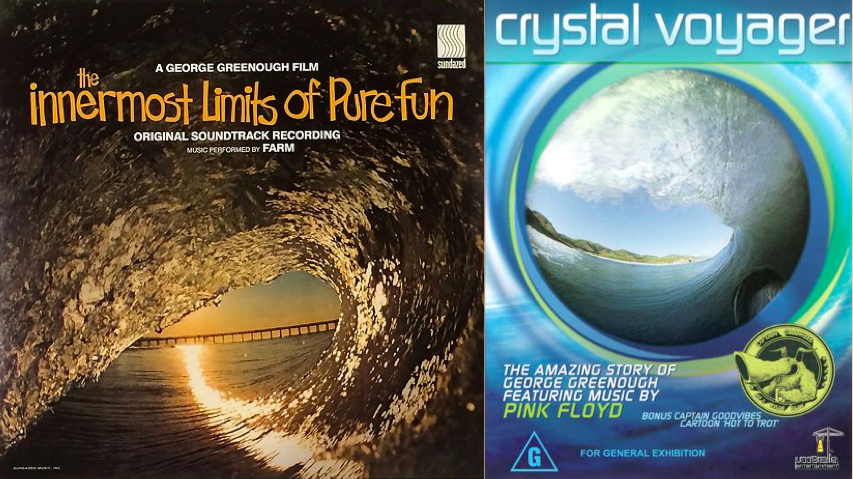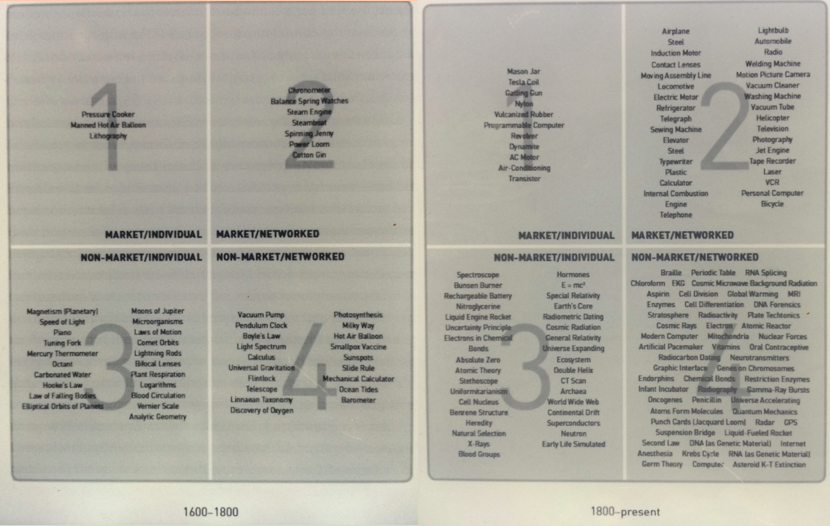MIT media design lab director Joi Ito explains in the TED radiohour how concerned citizens joined a bottom-up innovation movement after the 2011 earthquake in Japan and its subsequent nuclear crisis to develop radioactivity measurement hardware. The resulting platform safecast is a monument for how innovation emerges in the forth quadrant, so called by Stephen Johnson in his bestseller, Where Good Ideas Come From? Innovation does not anymore exclusively take place in corporations or government owned research institutions; it has left the top down organization structure and is being distributed through the internet to ordinary citizens, who show genuine concern for solutions.
Ito’s 2014 TED talk makes me recall an older one by innovation expert Charles Leadbeater. He explained already in 2009 how collaborative creativity changes the way we innovate and asks how do we will organize ourselves without organization? He shows how the internet facilitates a transition from mere consumers to innovative users, and shares his research on the rise of pro-ams, i.e passionate amateurs who act like professionals. It is these people, I believe, who will catalyze innovation which creates the healthiest workplaces in the world.
And there is yet another memory crossing my mind while thinking of an answer to Nitin’s question. On a wind-down-day at the coast of Pran Buri in 2015 we watched Crystal Voyager and parts of The Innermost Limits of Pure Fun with surfer legend George Greenough. George "The Mat" is probably exemplifying the passionate man going his own way. Sure, he is a wealthy parents' offspring and can afford to do whatever he pleases, but he chooses a life which does not follow the Maslow hierarchy of needs. He does not conform to the earthly desires of status, peer pressure, to what society considers normal. He follows his passion in every aspect of life and by doing that turns into a surfer, philosopher and engineer. George is credited with being the best mat surfer on planet and with inventing surf board fins. He is moreover a pioneer of water photography and built his own unsinkable sailing boat. He designed, invented and engineered out of pure fun.
What stroke me is how his life style seems to have inspired Pink Floyd. The creators of "we don't need no education" must have seen in George the living proof of their claims about institutionalized education and named one of their albums after his legendary surfing documentary. Pink Floyd’s claims which have been confirmed by modern neuroscience, e.g. in the documentary Alphabet where neurologist Gerald Hüther says: you can't force man to learn, you can only inspire him to make his own efforts. The same is true for all purposeful innovation, which arises out of inner necessity of a curious mind at play.
Swiss psychoanlyst C. G. Jung knew this. He said that the creation of something new is not accomplished by the intellect but by the play instinct acting from inner necessity. The creative mind plays with the object it loves. In as such we will create the healthiest workplaces in the world in Stephen Johnson’s forth quadrant, i.e. in the non-market & networked innovation space, where mindful consumers and curious users play with their environment to find solutions for a better tomorrow.
Further Reading & Watching
- Innovation & creativity expert Charles Leadbeater on Innovation
- Non-fiction author Steven Johnson on Where Good Ideas Come From?
- Father of Invention with Kevin Spacey: tragic comedy about an inventor
- MIT Design Lab Director Joi Ito on present moment innovation
- George Greenough documentary Crystal Voyager on youtube

